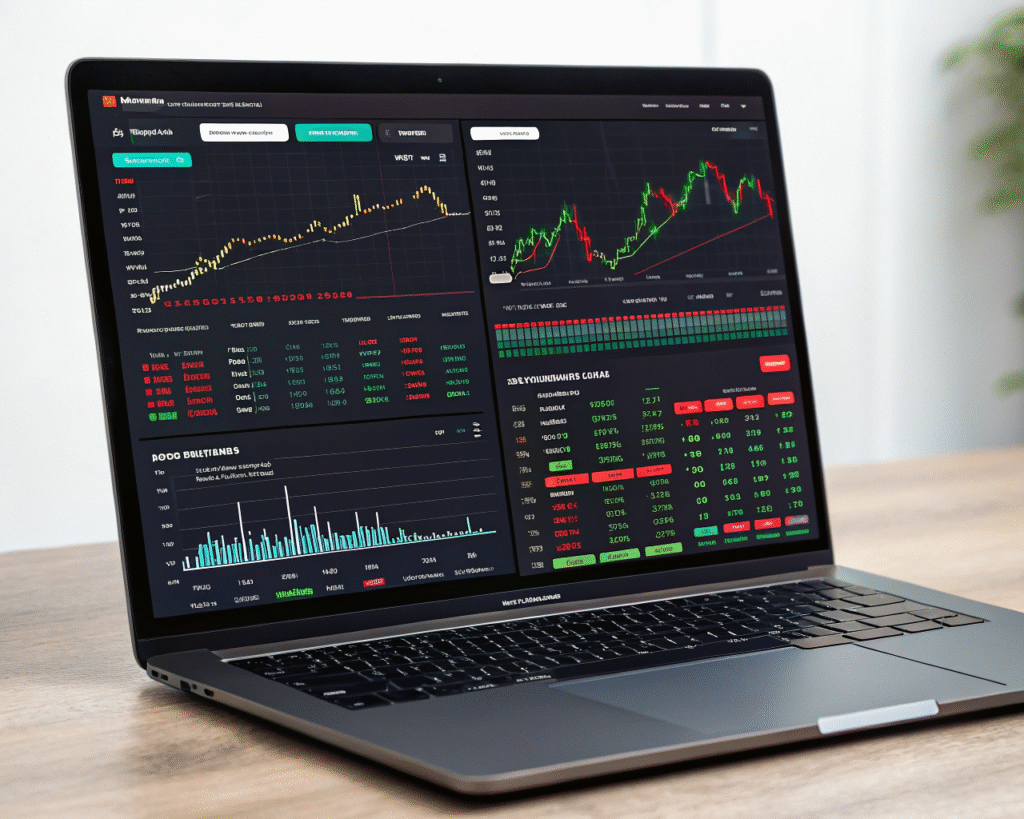
Today’s trading demands both a solid strategy and the right platform. MetaTrader 4 and TradingView are top choices mt4 mt5, each offering unique tools that suit different styles and experience levels. This comparison aims to objectively highlight their key features to help you choose wisely.
Overview of Trading Platforms
What is MetaTrader 4?
MetaTrader 4 is a downloadable trading platform, produced by MetaQuotes, mainly for trading Forex and CFDs. Launched in 2005, it gradually became the trading platform of retail traders, thanks to the highly efficient execution, the excellent automation, and also the broker integration. MT4 introduces custom indicators, algorithmic trading via Expert Advisors (EAs), and many other technical analysis specific tools.
What is TradingView?
As far multi-asset coverage goes, Trade View provides charting and analysis through the cloud. Best known for its all-out sleek interface and some powerful charting as it supports stocks, forex, crypto and many others. It has a massive social network in terms of number of traders who share scripts, strategies and trade ideas in real time.
MetaTrader 4 Features and Functionalities
Technical Indicators and Charting Tools
MT4 offers over 30 built-in indicators and customizable charting tools. Traders can add custom indicators via MQL4 and access multiple timeframes for granular analysis.
Expert Advisors (EAs) and Automation
EAs allow traders to automate strategies based on coded logic. The MQL4 language enables complex algorithms that can backtest and optimize strategies directly within the platform.
Execution Speed and Broker Integration
MT4 connects directly with hundreds of brokers and liquidity providers. It supports ECN and STP models, offering fast execution and access to deep liquidity.
Mobile and Desktop Compatibility
MT4 is available on Windows, iOS, and Android, with full trading functionality on mobile devices—ideal for on-the-go trading.
TradingView Features and Functionalities
Web-Based Interface and Social Trading
No installation needed—TradingView runs entirely in the browser and offers seamless access across devices. Users can follow other traders, share ideas, and publish charts publicly or privately.
Advanced Charting and Scripting (Pine Script)
Pine Script gives users the ability to create custom indicators and strategies. TradingView also features multi-chart layouts and indicators that adapt to real-time data.
Asset Coverage and Market Data
TradingView covers a wide range of assets: stocks, indices, forex, crypto, commodities, and ETFs. It sources data from global exchanges, providing rich and accurate datasets.
Community Insights and Public Scripts
Thousands of free indicators and strategies are available in the public library, enabling users to tap into crowd-sourced tools and insights.
MetaTrader 4 vs TradingView: Key Differences
| Feature | MetaTrader 4 | TradingView |
| Platform Type | Downloadable (Desktop/Mobile) | Web-based with mobile apps |
| Automation | Full (EAs via MQL4) | Limited (Custom alerts via Pine) |
| Broker Integration | Direct (native with brokers) | Indirect (via third-party bridges) |
| Asset Coverage | Mainly Forex and CFDs | Multi-asset (Stocks, Crypto, Forex) |
| Charting Tools | Basic to Intermediate | Advanced and Customizable |
| Community Features | Limited | Strong social network & scripts |
Which Platform Suits Your Trading Style?
For Algorithmic and Forex Traders
MetaTrader 4 is ideal due to its automation flexibility, native broker execution, and forex-centric features.
For Chartists and Multimarket Traders
TradingView offers exceptional charting, market coverage, and social tools, making it a favorite for technical traders in diverse asset classes.
For Beginners and Mobile Users
TradingView’s user-friendly UI and browser accessibility are perfect for beginners, while MT4 requires a steeper learning curve but offers depth for committed traders.
Pros and Cons of MetaTrader 4
Advantages
- Proven and stable execution
- Advanced algorithmic trading support
- Extensive broker connectivity
- Light on system resources
Limitations
- Outdated user interface
- Primarily forex and CFDs
- Limited social/community features
- Manual updates required
Pros and Cons of TradingView
Advantages
- Browser-based and accessible from any device
- Advanced charting and scripting tools
- Strong social ecosystem and public resources
- Supports a wide range of asset classes
Limitations
- Limited native execution (requires broker bridge)
- No deep automation support like EAs
- Premium features behind a paywall
- Dependent on internet connection quality
Final Verdict: MetaTrader 4 vs TradingView
Summary of Key Takeaways
- MetaTrader 4 is best for algorithmic, high-frequency forex traders needing broker-side integration.
- TradingView is ideal for visual traders, analysts, and multi-asset investors who value community and convenience.
Platform Choice Based on Use Case
| Use Case | Recommended Platform |
| Automated Forex Trading | MetaTrader 4 |
| Advanced Chart Analysis | TradingView |
| Social and Community Trading | TradingView |
| Broker Execution and ECN | MetaTrader 4 |
| Mobile/Browser Trading | TradingView |
Frequently Asked Questions
Can I use both MT4 and TradingView together?
Yes. Many traders use TradingView for analysis and send trade signals to MT4 for execution via third-party tools or manual input.
Which is better for beginners?
TradingView, due to its intuitive interface and visual tools, is generally more beginner-friendly.
Is TradingView free?
Yes, there’s a free version with limited features. Paid plans unlock advanced charting, more alerts, and multi-chart layouts.
Does MT4 support stock trading?
MT4 primarily supports forex and CFDs. Stock trading depends on broker offerings, often via synthetic instruments.